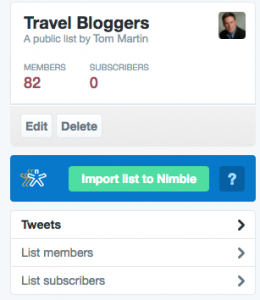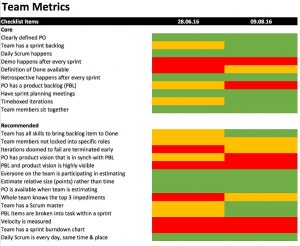SEO is an ever moving target that seems to change with the seasons. For example, there has recently been a big movement towards integrating search directly into operating systems like Cortana. How does that impact your fundamental strategy?
Your job isn’t to be an expert at SEO, but to effectively drive traffic that converts to your website. While trying to game the newest algorithms may sound appealing, it is best to focus on the fundamental do’s and don’ts to successfully accomplish this goal.
Today, we’ll walk you through the top six principles you need to keep track of for the rest of 2016 to stay up to date with best practices. By the end, you’ll be ready to take on the second half of the year with confidence that you’re heading in the right direction.
Do: Make Your Entire Keyword Routine Smarter
Hummingbird and, later, RankBrain, have totally changed the way Google processes search queries, making SEOs talk more about topics and concepts rather than traditional keywords.
Nevertheless, keywords, however differently approached, remain the basis of any SEO strategy, and it’s high time to ask yourself if you’re taking the most of your keyword data.
Regardless of how big your website is and how many keywords you track, you should be able to answer the following questions:
- What are your priority keywords? Why?
- How hard is it to get to page 1 in Google for any given term on the list?
- Why are some keywords losing rankings?
- What keywords should go in the title tag of your home page?
Next Steps
Here are the steps to make your entire keyword routine smarter:
- Collect as much keyword data as possible.
- Refine the raw keyword list by the two criteria: the number of words in your key phrase and the search volume.
- Segment your keywords by semantics, search intent, search volume, and competition.
- Build a keyword map: align your keywords with specific pages.
Do: Improve Your Site’s Page Speed
We live in a virtual world where a one second delay in page loading time can result in a 7% reduction in conversions, which leads us to a clear conclusion: speed matters. And as Google tends to implement algorithm updates that encourage improved user experience, it should come as no surprise that speed is within their sights for 2016 and beyond.
Google actually announced speed as a ranking factor way back in 2010, but things have been pretty quiet on that front ever since. That said, it’s only a matter of time before website speed becomes a more prominent factor in SEO, not to mention the clear additional benefits of quickly loading sites.
Next Steps
Site speed and its impact on SEO is currently based on the desktop version of your website. However, Google’s focus will shift to include the mobile experience your users receive in a matter of months.
Get started by testing your site with Google’s Mobile-Friendly test tool, using its recommendations to improve your website’s load time.

Meanwhile, you can follow these steps to immediately improve your site speed:
- Remove ‘middleman’ 301 redirects between various versions of your website. For example, don’t redirect http:// to https://, and then finally https://www. Instead, go straight from http:// to https://www. (If you use WordPress, follow this tutorial.)
- Optimize images. Google offers an in-depth guide to get you started.
- Enable browser caching. This means if a user revisits a page, it will reload almost instantly from memory.
- Prioritize the loading of content within the browser screen. This requires careful thought and planning in structuring the HTML of your page and the loading order of your styles and scripts.
- Avoid JavaScript that blocks page rendering. This can be achieved by using inline scripts, asynchronous loading, and deferring JavaScript until after the rest of the page has loaded.
Do: Optimize for Voice Search
Voice search represents a whopping 20% of mobile queries, which means that you could be leaving money on the table if your content isn’t optimized accordingly.

Looking forward, considering the growing number of operating systems that can be controlled with voice commands and the continuing growth in popularity of mobile devices, voice search is only set to grow.
Next Steps
Optimize your content for voice search with these tips:
- Write conversationally (i.e. the way you talk). Practice asking questions out loud to get the hang of what people are likely searching for.
- Study voice search user guides to understand how people are being advised to use voice commands. CNET offers a complete list of Siri commands, ”Ok Google” commands, and Cortana commands.
- Consider adding web pages that can give searchers quick, concise, and clear information on the go. Here is an explanation about how this could work in a FAQ section.
- Major on local content (if appropriate to your site). Many people use voice search while driving – particularly to find local business information.
- Add structured data to your website. This enables search engines to easily identify data (such as your business’ phone number) to return in results.
Don’t: Get Left Out of the Knowledge Graph
In a nutshell, Google’s Knowledge Graph finds contextually and semantically related information within content to deliver entity-based search. It gathers different pieces of information together from a variety of sources and presents them in one helpful place for searchers.
Most importantly, the Knowledge Graph pushes down search results and highlights sites that offer clear and actionable data. Don’t be left out of these results!
The Knowledge Graph shows up on the right hand side of results in Google when you search for companies, influential people, local businesses, health information, and popular media.
However, it also fuels other data-rich search results:
- Google Answer Box, which charts data at the top of results.
- Google Rich Snippets, which features site snippets as the definition or answer to a question.
Next Steps
Optimize your site for the Knowledge Graph and its relatives with these steps:
- Leverage schema.org markup. Schema is Google’s preferred method of translating your content into data for search results.
- Become a high authority source. This is easier said than done, but for starters, your content should be concise, easy to read, well formatted, full of top-notch images, and be generally pleasurable to read.
- Get listed at wikidata.org and Wikipedia (information from these sites is often included in Knowledge Graph results).
- Optimize Google Maps and your Google+ Business Page to create a link between your content and its authorship.
Don’t: Underestimate User Behavior
Google’s official position on the way user behavior impacts rankings has been less than forthcoming. However, between employee statements, Google’s registered patents, and SEO experiments from the likes of Rand Fishkin, there is much evidence to suggest user interactions with search results directly influence rankings.
The following three user behavior metrics determine how relevant your links stay in search results:
- Click-through rate: How often do users click on your link in results?
- Dwell time: How long do users stay on your site after clicking your link?
- Pogo-sticking: Is the user bouncing in and out of search results to find what they are looking for?
Next Steps
Leverage the power of these user behavior metrics by optimizing the following:
- Pages with low click through rates in your analytics. Optimize their titles and descriptions, because higher quality copy can improve SERP click-through rates.
- Pages with poor bounce rates. Update these pages with higher quality content and relevant media. Include links to related content to keep the reader browsing.
- Your site’s load speed – as already mentioned above!
Don’t: Leave Bing Traffic on the Table
Together, Yahoo and Bing search represent 33% of desktop search traffic – quite possibly more than you thought.
It sounds like two extra search engines to optimize for, but Yahoo is driven by Bing search; optimizing for Bing works for both. And Bing’s market share is growing, thanks to:
- Microsoft browsers and Windows search, which represent a 21.2% market share of desktop and tablet browsers in the US.
- Firefox, which defaults to Yahoo search, is the primary desktop browser for 10.1% of internet users.
- Siri, which relies on Bing search results.
Next Steps
SEO for Bing is easier than you’re used to. To get started, register your site with Bing Webmaster Tools. Next, follow these steps:
- Ensure your pages are indexed.
- Tell Bing to crawl your site more frequently.
- Create an error-free sitemap. Bing is more strict about 404 and 500 errors than Google. Correct any you find before submission.
- Submit your sitemap.
After that, optimize on-page content. Keep in mind that Bing:
- Values verbatim keyword matching
- Still uses meta keywords
- Looks for consistent use of keywords in headings and content, particularly towards the beginning
- Considers user behavior as a ranking factor
- Calculates social media influence as a ranking factor
Conclusion
It’s easy to feel lost in the sea of SEO tips and tricks that come out every year, but with the above, we’ve got you covered for staying effective in 2016.
Just remember:
- Do: Make Your Entire Keyword Routine Smarter
- Do: Improve Your Site’s Page Speed
- Do: Optimize for Voice Search
- Don’t: Get Left Out of the Knowledge Graph
- Don’t: Underestimate User Behavior
- Don’t: Leave Bing Traffic on the Table
Do you have an SEO trick up your sleeve that we missed? Let us know in the comments section below!
Digital & Social Articles on Business 2 Community(68)
Report Post








